|

Arthur Wellesley
Anglo-Portuguese Expeditionary Force
39,840 British infantry
17,280 Portuguese infantry
5,440 cavalry
40 artillery |

Count Castanos
Left Wing of Army Real
17,760 Spanish infantry
10,560 Spanish militia infantry
1600 militia cavalry
40 artillery |
THE BATTLE OF GUADARRAMA
Aug 2 - 1809
Great War of Defiance Memoirs |
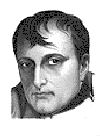
Emperor Napoleon
Armee de Pyrenees
27,840 infantry
5440 cavalry
48 artillery |

After defeating the army of Castanos at Madrid on July 29th,
Napoleon remained in Madrid for four nights. There was no pursuit of the Spanish
and Wellington was allowed time to assemble his army across the French line of
communications back to Valladolid. A garrison is established for the Spanish
capital and a temporary government is put in place to administer the captured
Spanish nation and New Castile province but precious time is taken up tending to
the details of running a conquered nation. A new treaty is proposed to the
Spanish and British but there is no reply. Finally, on the 1st of August,
Marmont's Corps is ordered to begin marching back along the line toward
Valladolid. The Marshal is not surprised to report back that the British are in
Guadarrama. He is astonished though at the number that are there. 60,000 is
perhaps twice what Napoleon had expected to try barring his path.
The rear of the column, including a division of infantry, a
division of cavalry, and Napoleon and his artillery would be following up the
next morning and then there should be sufficient forces to push the British
aside. Marmont would begin the battle at Guadarrama on the morning of the 2nd
and when Napoleon arrived with reinforcements, a victory would be achieved.
The French Emperor was enjoying a breakfast in Madrid though on
the 2nd of August, before taking the road to the battle, when word came of 30,
000 Spanish within three miles of the Spanish capital. Everything had suddenly
changed.
The Coalition forces had an opportunity here to utterly destroy
the Emperor's small army and perhaps capture the Ogre. To be certain, the
Spanish forces were the battered remnants of an army that had fought three
costly engagements with the French in the past two weeks, but the old Spanish
General was not going to let this opportunity pass. He would risk the last of
the army on this attack.
1000 hrs: Initial French deployment, looking north from Madrid.
Axelle division is half way to Guadarrama and the Chloe Cavalry division
prepares to depart along the same road.

The British are deployed in such strength that there is no way
that Marmont could seriously consider fighting his way through to Segovia.
Marmont deploys to defend his position. He has a single brigade occupy Collado
Villalba village and deploys the rest of his corps between woods at Galapagar
village. The lake to the northwest of the position and the stream to the
northeast would be obstacles to the British advance.
For the British, Crauford's corps is mostly Portuguese but the
leading elements are British and they would be directed to join the attack
against Collado Villalba. Hamilton is under orders to follow the stream and
deploy to assault the French right flank. Wellington has personal command of
Moore's veteran division on the far left. This would be the extreme left flank
of Wellington's attack.

Initially, Bonaparte and his cavalry made for Guadarrama but the
arrival of Castanos' lead elements at 1100 hrs has altered the plan and the
French horse is already beginning to deploy to the left of the road.
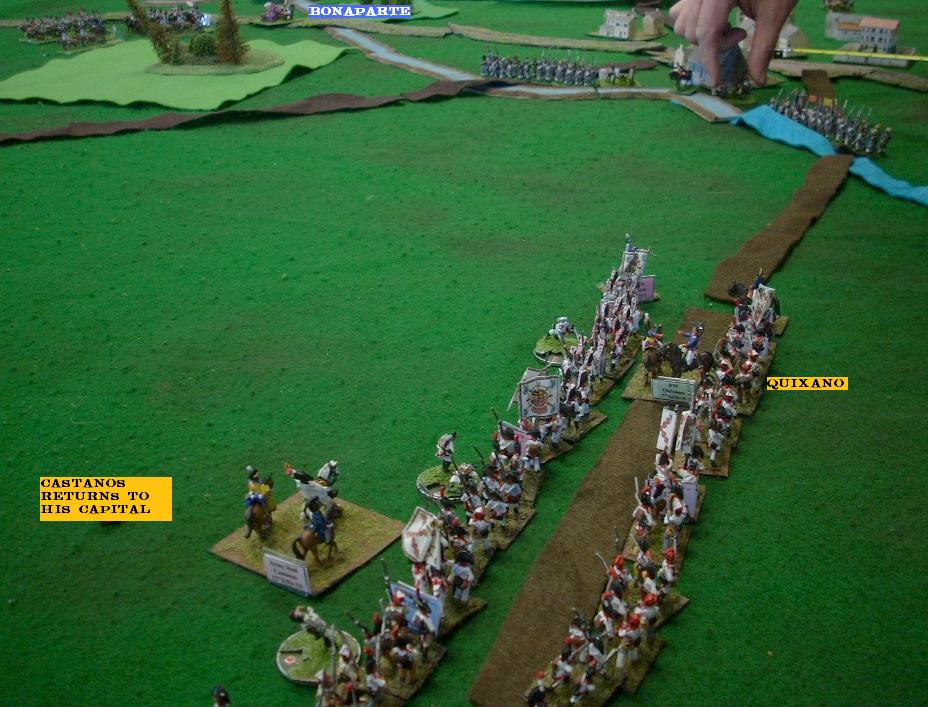
Palafox is entirely Spanish militia so though initially only a
single cavalry division opposes the corps, it is enough to give Castanos grave
concern. Palafox is ordered to defend on the left while Quixano will attack
Madrid. The French garrison there must be destroyed so that the Capital is
retaken. Couriers between Castanos and Wellington take approximately two hours
and there is some risk involved in the ride.
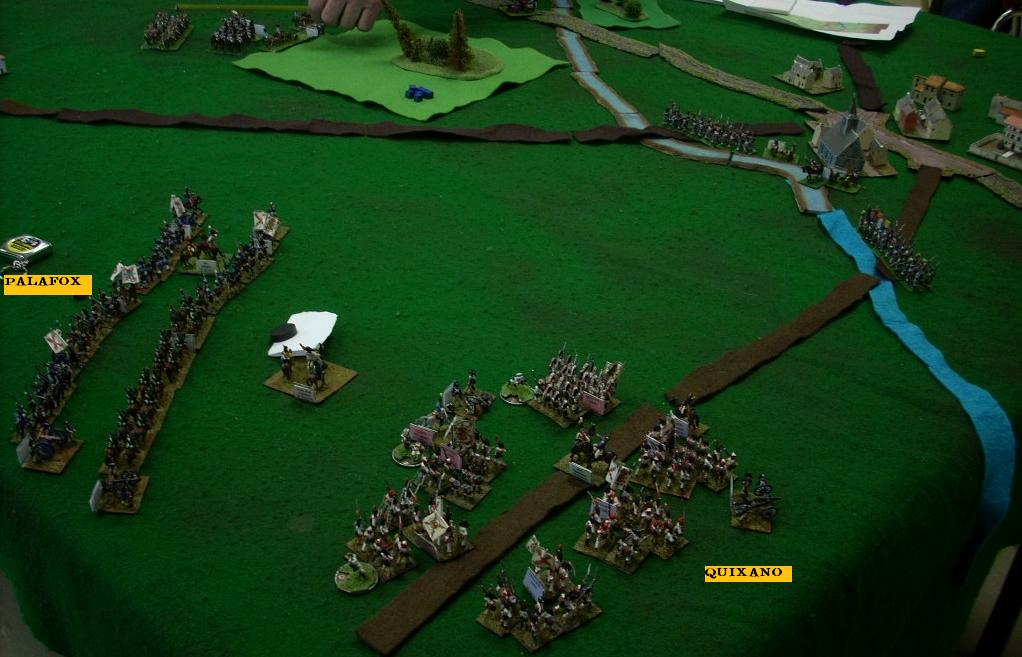
1200 hrs. Marmont has an aggressive left wing and it advances
confidently against the Portuguese on the British right flank. Collado Villalba
falls quickly to a coordinated British assault but otherwise, Wellington's
advance is cautious. Moore and his veterans though are in columns and marching
wide on the elft.
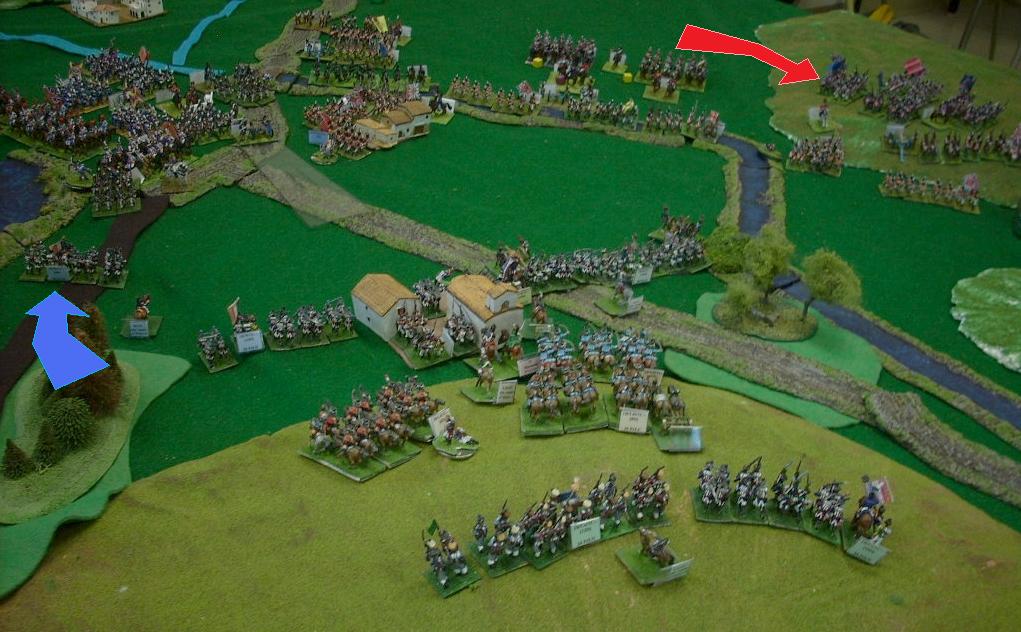
1230hrs: Galapagar is set alight by British howitzers. The
defenders try to extinguish the blaze but would fail to do so and they are
obliged to quit the village. The large cgurch and out buildings would continue
to burn throughout the dry summer day.

Napoleon has recalled Axelle from the road to Guadarrama and
also brings his army's artillery reserve against the Spanish. His plan now is to
break Castanos' army and destroy it while Marmont holds up the British. If all
goes well for the French, Marmont should be able to retreat to Madrid and, with
the Spanish army routed, they will be better positioned to fight a second battle
against the British on the following day at Madrid.
Castanos, at this point, receives a message from Wellington that
reads simply 'I am engaged at Guadarrama and look to contain the French forces
here.' Castanos is alarmed and his reply reflects this.
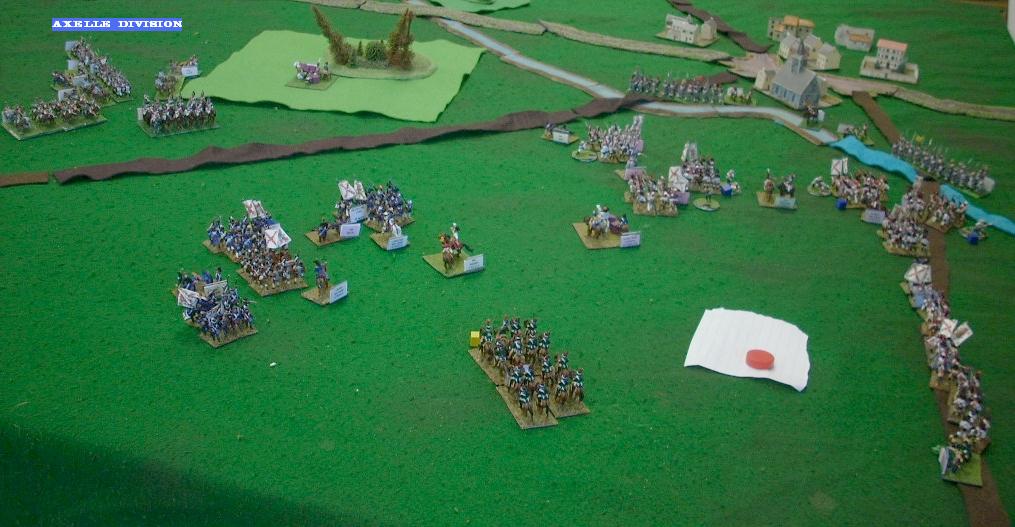
1400 hrs: On Marmont's left, great success is enjoyed by the
single energetic brigade. It would see off two cavalry charges and rout or
disperse three Portuguese infantry brigades in its attack. Meanwhile,
Wellington's left continues to move into position.

1430 hrs. Finally, the leading brigade of the French attack is
obliged to retreat itself back to the defensive positions. They have achieved
much glory and Crauford's Corps would be unable to advance again for several
hours. The terrain of the battlefield is funnelling the two British corps into a
very narrow frontage.
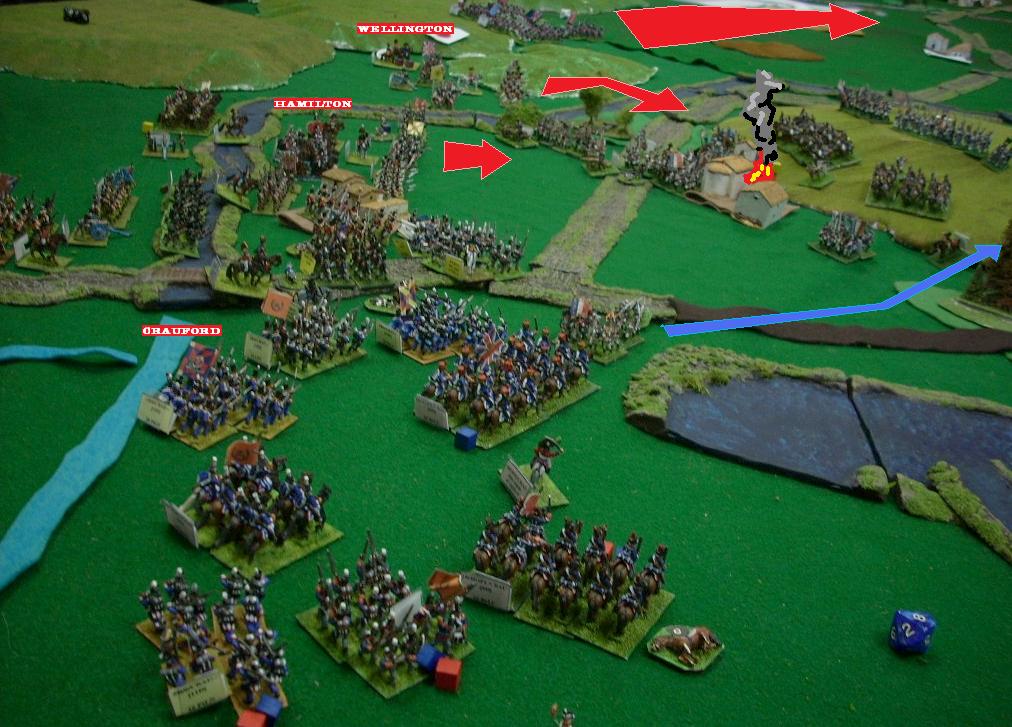
On the far left, Wellington has received Castanos' expressive
messages and is hurrying Moore south toward Madrid. He will personally accompany
this column and entrusts Hamilton and Crauford to conduct the battle. They are
at least two hours from Madrid's battlefield though.
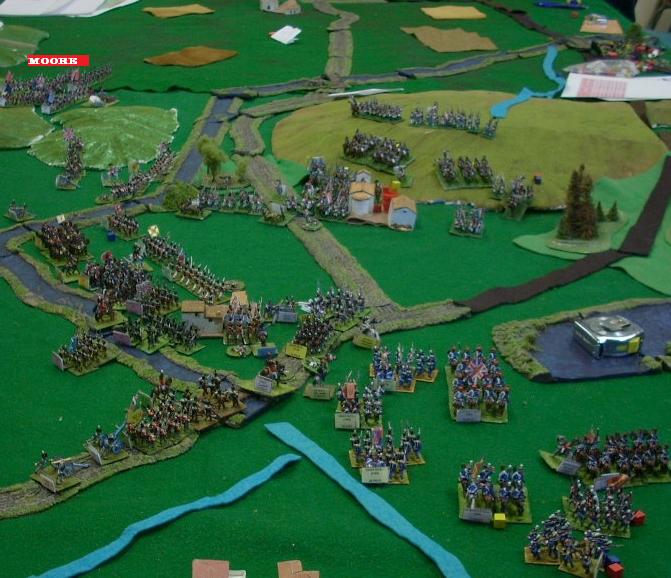
1500 hrs: In the South, Napoleon is launching his two divisions
against the Spanish militia with quick and decisive results. There is no
significant resistance and Castanos only narrowly escapes being captured by
Cuirassiers but the heavy cavalry are too occupied by chasing down routing
militia.
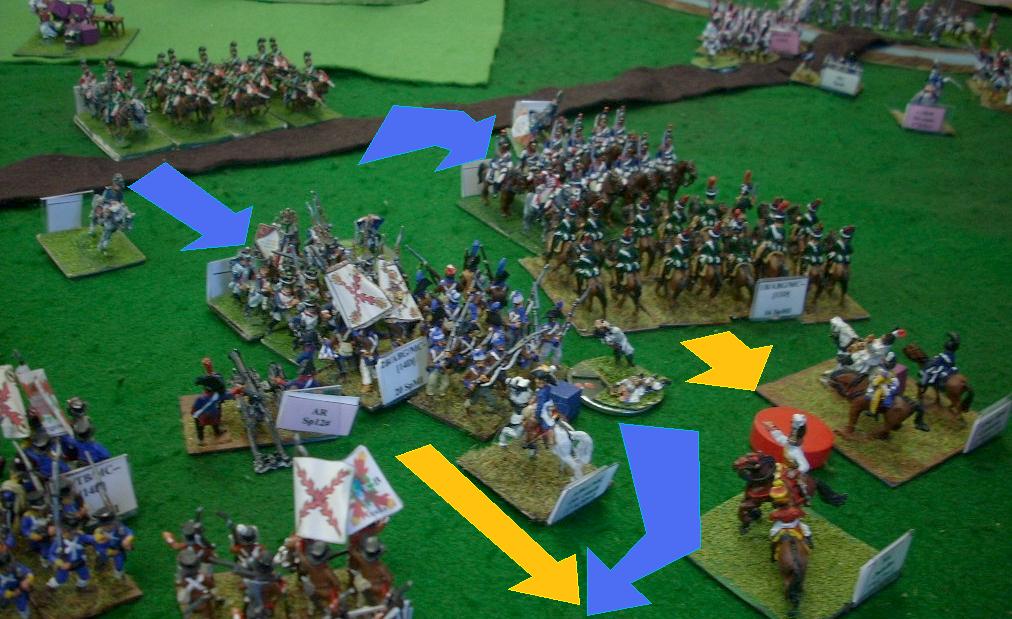
1530 hrs: Marmont's line continues to hold but British fire is
thinning the French ranks. Hamilton prepares to launch assault columns in the
gap to the east of the burning village

1530 hrs: Palafox's command effectively ceases to exist. The
artillery would courageously remain to get in some effective fire but the whole
of the Spanish army is nearly broken. The French cuirassier would try a charge
aganst Quixano's rear but the Spanish regulars would manage to get into square
to repulse the veteran French cavalry.
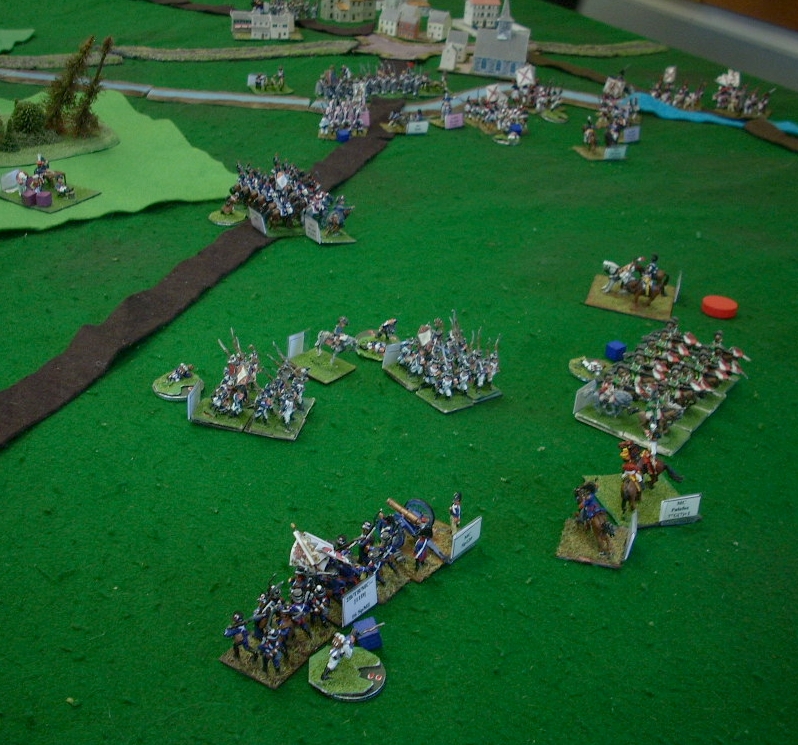
1600 hrs: Quixano enters Madrid and hurries his columns through
the streets to come upon the French defenders from the rear and flank.
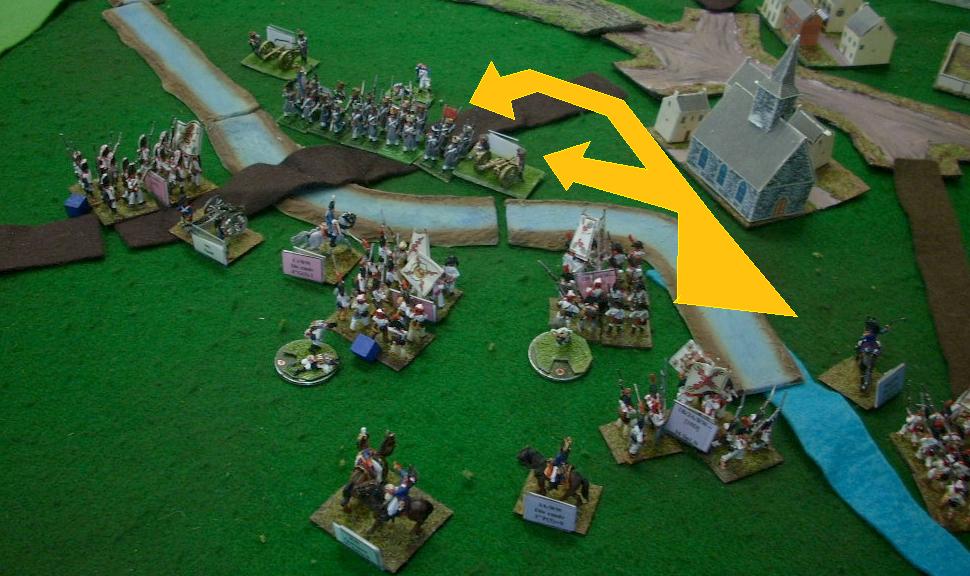
1630 hrs: END GAME: Moore has arrived and struck the French
artillery from behind, instantly obliging the gunners to abandon the ordnance
and flee for their lives. Napoleon orders the tired remnants of his divisions to
retreat to Torrijos and then rides with a small entourage to join Marmont at the
northern battle.

Marmont's corps is nearly exhausted and their perimeter has
shrunk. Still, another attack is launched on the left flank and again, the
British are pushed back there. Crauford and Hamilton's corps though are still
strong and the British have pushed past the chokepoints and rough terrain. It
will be easier for them on the morrow. Marmont has no choice but to join in the
general retreat to Torrijos.

It is a significant French defeat. They are obliged to retreat
to Torrijos. They are cut off from their base of operations at Valladolid and
will likely be pursued by Wellington. Castanos was mauled but he was still, at
the end of the day, in control of his capital and could spend the night on the
field. The Spanish have reclaimed Madrid and driven Napoleon into the
wilderness.



















